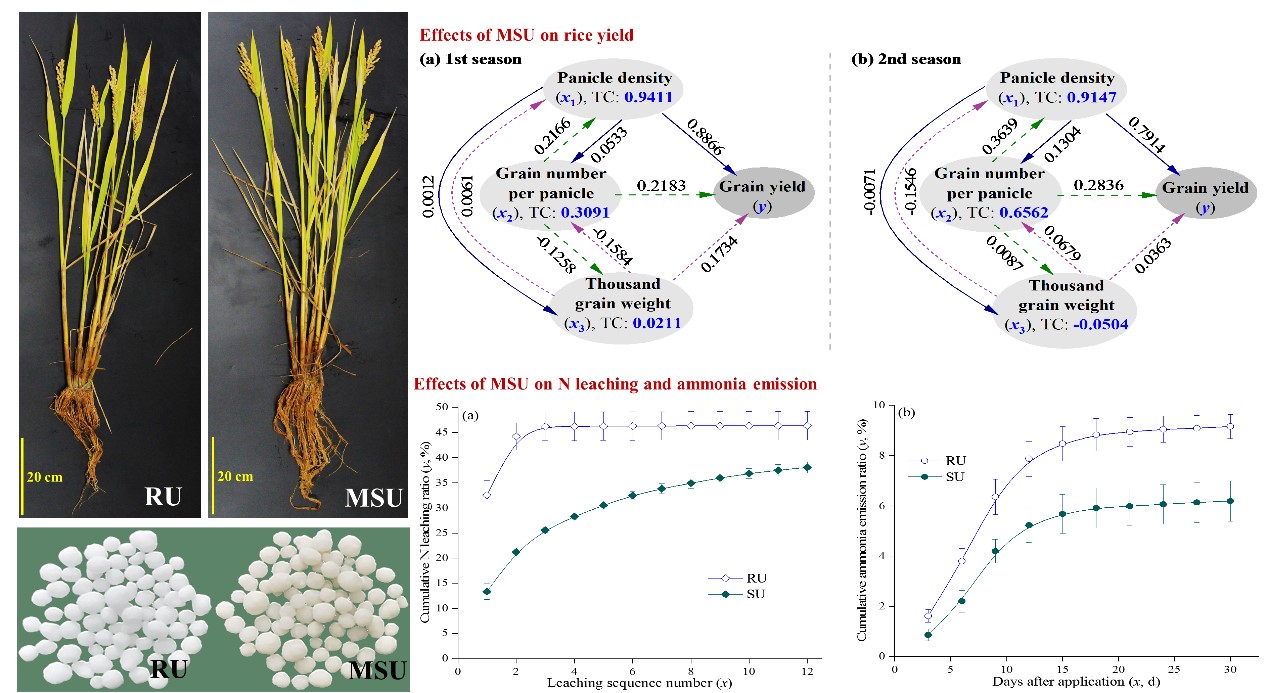The applied nitrogen (N) in crop production is easily lost through ammonia emission and N leaching. Therefore many attempts have been made on the development of novel slow-release fertilizers to reduce N loss and improve crop production.
A research team led by Professor WU Yuejin from Institute of Intelligent Machines, Hefei Institutes of Physical Science developed a novel matrix-based slow-release urea (MSU) recently, to improve N use efficiency in rice production, and assessed the performances of it.
"MSU is a promising fertilizer for rice production," said WU, a scientist of biology, "as less N loss and greater soil N availability can improve rice growth traits and physiological parameters in MSU.”
In this research, scientists combined the several organic and inorganic matrix-materials to improve the performance of MSU. These matrix-materials showed high adsorption and flocculation capacity, leading to the good slow-release performance of the MSU. Additionally, the matrix-materials contained available iron (Fe) and sulfur (S), which promoted the nutritional balance of rice.
Consequently, application of the MSU increased agronomic N efficiency by 58%-64% and rice yield by 18%-21%.
"We have trust on a broad prospect for environment-friendly and efficient rice production of MSU." said YANG Yang, a researcher in the team.
The work was supported by the National Key R&D Program of China, the National Natural Science Foundation of China, Anhui Science and Technology Major Project, and the Science and Technology Service Network Initiative of Chinese Academy of Sciences.
Link to the paper: Rice productivity and profitability with slow-release urea containing organic-inorganic matrix materials

Compared with regular urea (RU), the matrix-based slow-release urea (MSU) reduced N leaching and ammonia emission, and thus improved rice growth and increased rice yield. (Image by YANG Yang)
Contact:
ZHAO Weiwei
Hefei Institutes of Physical Science (http://english.hf.cas.cn/)
Email: annyzhao@ipp.ac.cn
 Tel: +86-551-65591206
Tel: +86-551-65591206
 Fax: +86-551-65591270
Fax: +86-551-65591270
 Emai: zhous@hfcas.ac.cn
Emai: zhous@hfcas.ac.cn
 350 Shushanhu Road
350 Shushanhu Road